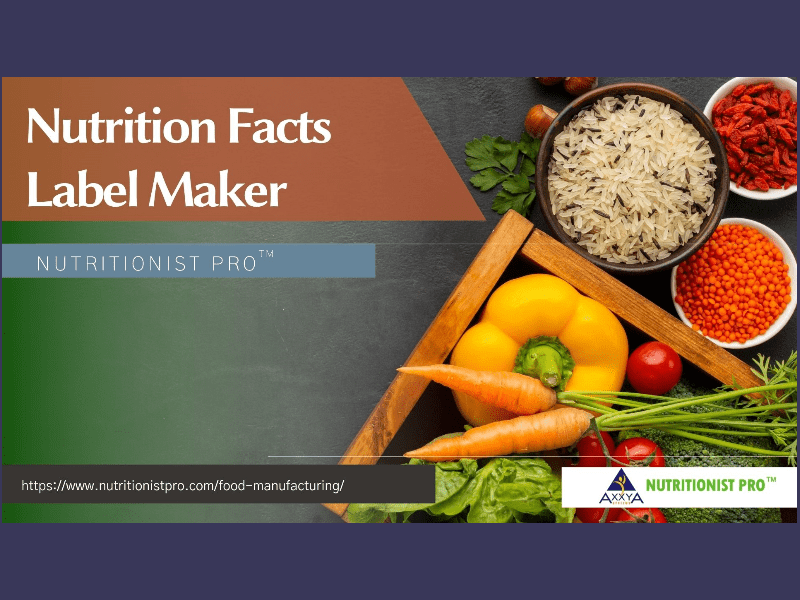Food labels are crucial, no matter if you need them for your own food products and marketing or want to make an informed choice of a food you want to consume.
Labeling food products with accurate nutrient information is a top priority for food manufacturers, so that they may meet the food regulatory guidelines on one hand and also present good information for their food products to consumers. But how do you work out the calculations for the food nutritional values? Is it possible to calculate food nutrition information for all of your recipes by hand? Or, try and find an easier solution.
Let’s dig into how you can do it effortlessly for your food products.
What are food nutrient facts?
are a collection of nutritional values that are present in a food product. The most common nutrients are protein, fat, energy, carbohydrates, saturated fat, sodium and sugars.
Declaration of Mandatory Nutrients
It depends on where you are located, the law will stipulate what nutrients are necessary to be declared. You will also get to find exemptions that depend on the type of food which you manufacture. Some specifications food labels need to contain.
Serving Size
A food label might show “servings per container” and “serving size” in a larger font size and a bolder type. Serving size can be based on the amounts that people are actually eating, not what recommendations suggest they should be eating.
Calories
Food labels have to show calories much more prominently. For example in the new labels for USA, you will not see “calories from fat,” since research has proven that the type of fat in a food is more important than the amount of fat.
Added Sugars for USA labels
In the new rules for USA food labels, the amount of added sugars needs to be clearly specified. It means the sugars that are added during food processing. Research shows that staying within calorie limits is difficult when you consume more than 10% of your total daily calories from added sugar. Too much added sugars tends to lead weight gain and other health problems.
Nutrients and Daily Values
Food labels will show various nutrients such as Vitamin D, Potassium, Calcium, Iron and others. In the food label, certain nutrients also need their percent daily value (%DV) shown as well.
Calculation Methods
There are two popular ways to calculate food nutritional values. It is either by laboratory analysis or by using the data-based food nutrition facts analysis and labeling software.
Laboratory analysis is an expensive procedure, requiring you to send your finished product to a laboratory where they will physically test the product using the approved methods and then wait for their final report after analysis. Each change in the recipe or formulation will need to go through this exact process which can be very costly. In addition each item will need to be analyzed as well.
The calculation method using a food analysis and labeling tool, on the other hand, is quicker and easier. You need to enter your ingredients and measurements into the system and create the recipe/formula and the system will calculate the finished products’ overall nutrient value using prebuilt ingredients in the softare. In addition the software also allows you to add your own ingredients that can help with building your recipe as well. All the more, you will also find staying regulatory compliant is a breeze while using a tool like Nutritionist Pro™.
A Brief: How does Nutritionist Pro™ make your entire workflow of food nutrient calculation and labeling a breeze?
Easy-to-use for simple and complex recipes, Nutritionist Pro™ allows its users to calculate nutritional values of a food product and customize label styles with just a few clicks! Nutritionist Pro™ comes with built-in tools to automatically calculate nutrient claims for many regions in the world and make food import/export easier by following complicated guidelines. It comes with easy-to-use wizards to make data entry and recipe/formula creation fast and efficient.
Easy, affordable and available both as desktop and online choices, Nutritionist Pro™ is quick to implement for your company. To learn more, visit our website.
